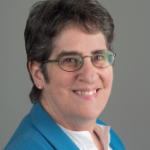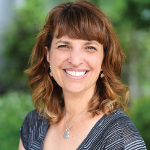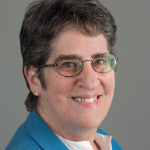As former physician editor of The Rheumatologist, Dr. Seo discussed his unique experience and how that role spurred him to think in innovative ways about what practicing rheumatologists and rheumatology professionals want to read monthly. He said that it was joyful for him to read articles in which authors expressed their opinions on timely subjects, analyzed healthcare policy and the realities of medical practice and shared personal anecdotes or experiences. Additionally, he encouraged students, fellows-in-training and others who may be early in their careers to submit to periodicals like The Rheumatologist because it’s a wonderful way to engage with a wider audience and learn to communicate information in a compelling fashion.
Co-Authorship
Marcy Bolster, MD, professor of medicine at Harvard Medical School and director, Massachusetts General Hospital Rheumatology Fellowship Training Program, Boston, reflected on her experience as an editor for a series of patient education books and for an interdisciplinary textbook that will soon be published.
She provided extremely useful advice, including how to successfully manage co-authorship of an article. Dr. Bolster recommends that authors start with an outline to use as guidance for the group, set up a timeline of activities and stick to this schedule. Determine if all authors will contribute written content or if one or two authors will provide the content while others supply suggestions and edits. If there are multiple content contributors, then the group should ensure that everyone is aware of article word count limitations. Also, create a good process for keeping track of references.
Weaving together the final manuscript can be challenging because it will combine many different writing styles and may lack cohesiveness. Thus, one person should be assigned this task at the beginning. Co-authors should also agree on authorship order at the onset of the project. This subject can be sensitive, and Dr. Bolster recommends being diplomatic and respectful to one another throughout the process.
Textbooks: Dr. Bolster discussed her unique experience as a textbook editor, which has provided her with the opportunity to learn new medical content, observe different styles of practice and appreciate the art of medicine. Being an editor lends one the chance to be creative in developing a product that will be used and referenced by a sizable audience.
The process of ensuring a textbook comes to fruition is less daunting than it may seem. If you have an idea for a book, begin by outlining the scope of proposed chapters and identifying potential contributing authors for each topic, then approach a book publisher with the proposal. The book proposal form itself is usually a simple document that can be easily completed and submitted to the publisher for review. Also, don’t be afraid to use your professional networks to connect with publishers and recruit talented co-authors after the book is approved.


